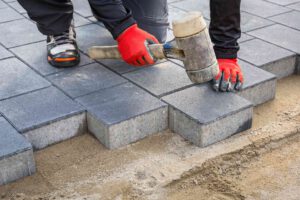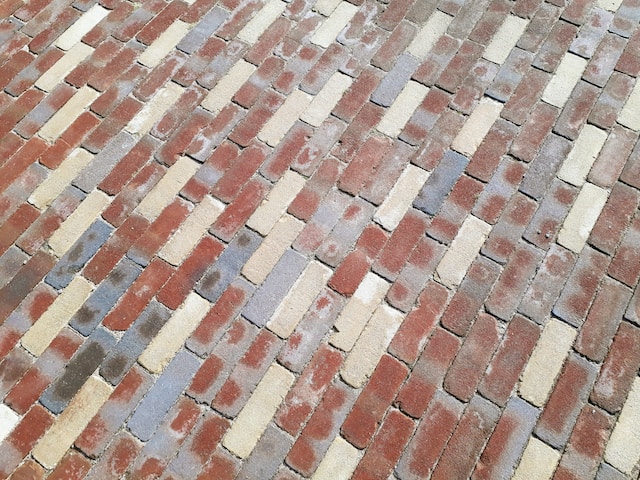Paving Companies Charleston SC a driveway is a big job that requires heavy equipment. You should always hire a licensed contractor to complete the project. It would be best if you also surveyed the area for underground utility lines before beginning the work.
Permeable paver driveways are environmentally friendly and help prevent the waste of car fluids into sewer systems. However, they can get clogged easily and require regular maintenance.

The driveway paving cost can vary greatly depending on the materials used, site preparation costs, and local labor rates. The average homeowner can expect to spend about $2,500 to $6,600 on a new or repaved driveway. The time needed to complete the project depends on the material and the driveway size.
There are many different types of paving materials available for residential driveways, including asphalt, concrete, gravel, and pavers. Each type has its benefits and disadvantages. The best option for homeowners is to choose a paving material that will fit their style and budget. Homeowners should also consider the longevity of their driveway and how much traffic it will see.
If homeowners want their driveway to last long, they should choose concrete. This type of paving is one of the most durable options and can withstand the weight of heavy vehicles. It can also be colored and textured to add a unique appearance. However, it is typically more expensive than other types of paving materials.
Another popular option is asphalt, which is less expensive than concrete and can withstand the freeze-thaw cycle. However, it is prone to cracking over time and requires frequent resealing. Gravel is a cheaper option, but it can be prone to erosion and isn’t ideal for cold climates.
Concrete is an expensive option, but it is highly durable and can withstand the weight of heavy vehicles. Homeowners can decorate their driveway with various colors, patterns, and textures for a customized look. It is important to select a concrete driveway contractor with experience in the industry to ensure that the work is done correctly.
Local building regulations and drainage requirements also influence the cost of a driveway paving project. Homeowners should check with the city or county about the required permits and other fees. A permit typically costs between $50 and $200, but it may be waived if a paved driveway connects the house to a public street.
Permeable paver driveways allow water to pass through the surface, reducing storm runoff and the need for supplemental irrigation. This can help to lower landscaping and water bills. Nevertheless, these driveways require more maintenance than traditional paving materials since they must be regularly washed or vacuumed to remove sediment from the joints.
When planning a new driveway, it’s important to choose the right material. The type of material you choose will determine how long the driveway will last and how much traffic it can handle. There are many options available, from poured concrete to asphalt and pavers. Each option has its benefits and disadvantages. The best choice will depend on your needs and the climate. If you live in a cold region, choose a hard material that can withstand freezing temperatures. If you live in a warm region, consider an absorbent material that can absorb rainwater and reduce flooding issues.
The first step in installing a new driveway is to clear and grade the site. Then, a sub-base is laid. Then, the paving is placed on top of it. A special binder is added to the surface. This ensures that the surface is strong and durable. After the paving is done, it’s time for the finishing touches. The edges are then put in place using metal or plastic edging. This helps prevent the paving from moving or lifting.
Paving stone is one of the most popular materials for new driveways. It is the strongest material you can use on a driveway, and it can last for decades. It also has a beautiful look that can complement any home. The stones are available in various colors, sizes, and textures. You can even find patterned and stamped concrete pavers that add more character to your driveway.
A gravel driveway is a great alternative to a paved driveway. It is affordable and environmentally friendly. However, it can create dust and mud on your vehicle. It is also not suitable for areas with frequent rain or snowfall. In addition, gravel is less strong than a paved surface.
Another alternative to a paved driveway is a permeable paver system like TRUEGRID. These interlocking pavers are laid on a crushed rock base or other durable aggregate. Then, a layer of clean sand is added to help lock the pavers in place. This layer of sand is compacted and leveled with a motorized plate compactor or hand-held tamper.
Before you start installing your new paver driveway, you must first prepare the area for paving. This is done by removing any structures, trees, or other items that are in the way of your new project. Then, the area is graded and sloped properly so that water will drain away from your home. Then, the sub-base is laid. This can be sand or gravel and should be 4 inches deep. This layer will be the foundation of your new driveway, and it’s important to get it right!
Once the sub-base is in place, you can lay down the individual pavers. It’s a good idea to use a mallet to pound down the stones so that they stay in place and don’t move or shift over time. After the pavers are set, the joints between each stone are filled with joint sand or gravel to enhance stability further. This step is especially important if you choose a porous material like gravel for your pavers because it will need to absorb water from rain or sprinklers.
The final installation stage is to apply the top layer of fresh asphalt. This gives paved surfaces their jet-black appearance and provides a smooth ride. The top layer should also be graded and compacted for proper drainage.
If your new driveway connects to other paved areas, such as old roads or parking lots, you’ll need to install butt joints. These are the transitional areas where old and new asphalt meet, and they’re necessary to ensure a seamless transition that will not be jarring on your vehicle’s suspension.
While you can DIY this step if you have experience with heavy machinery, it’s best to leave it to the professionals. They can handle the heavy lifting and provide the professional quality results that you’re looking for. And if you’re worried about the cost, they can estimate your project based on the square footage of the installation site. That will give you a more accurate figure than simply calculating the price of the materials by themselves.
Paving a driveway is a big project that requires specialized skills and heavy equipment to install. It’s also a permanent improvement to your home, so you want it to last as long as possible and look great. The best way to do that is with routine maintenance.
Most paving materials need routine cleaning, scrubbing, and sealing to keep them looking good and working well. Different types of paving require other preventative maintenance solutions. For example, flagstone may need frequent scrubbing and may not be suitable for heavier vehicles. Concrete and asphalt need resealing every few years to prevent water from penetrating, freezing, and cracking them. Brick drives need regular weed removal and cleaning to keep them looking their best.
Sweeping asphalt is prone to developing cracks, so sweeping the surface with a stiff-bristled brush regularly helps extend its lifespan. Oil and gas spills must be cleaned immediately because they can soften the asphalt and cause further damage. Crack repairs: Asphalt pavement needs to be resealed with a high-quality, latex-based, or siloxane-based sealant every three to five years. It should also be repaired when a pothole appears because it can get larger quickly.
Weeds grow in the voids between the paving stones, and they need to be removed as quickly as possible to prevent them from becoming a problem. Generally, a paved drive is easier to maintain than an unpaved one.
Suppose you’re considering a paving upgrade to your property. In that case, it is best to leave this work to professional paving contractors with the skills and heavy equipment needed to do it correctly. They can also survey your site for utility lines, which is an important step before beginning any demolition or digging. Call 8-1-1 before you start a project like this to have the experts mark or flag any areas where there are existing underground lines that need to be avoided.


